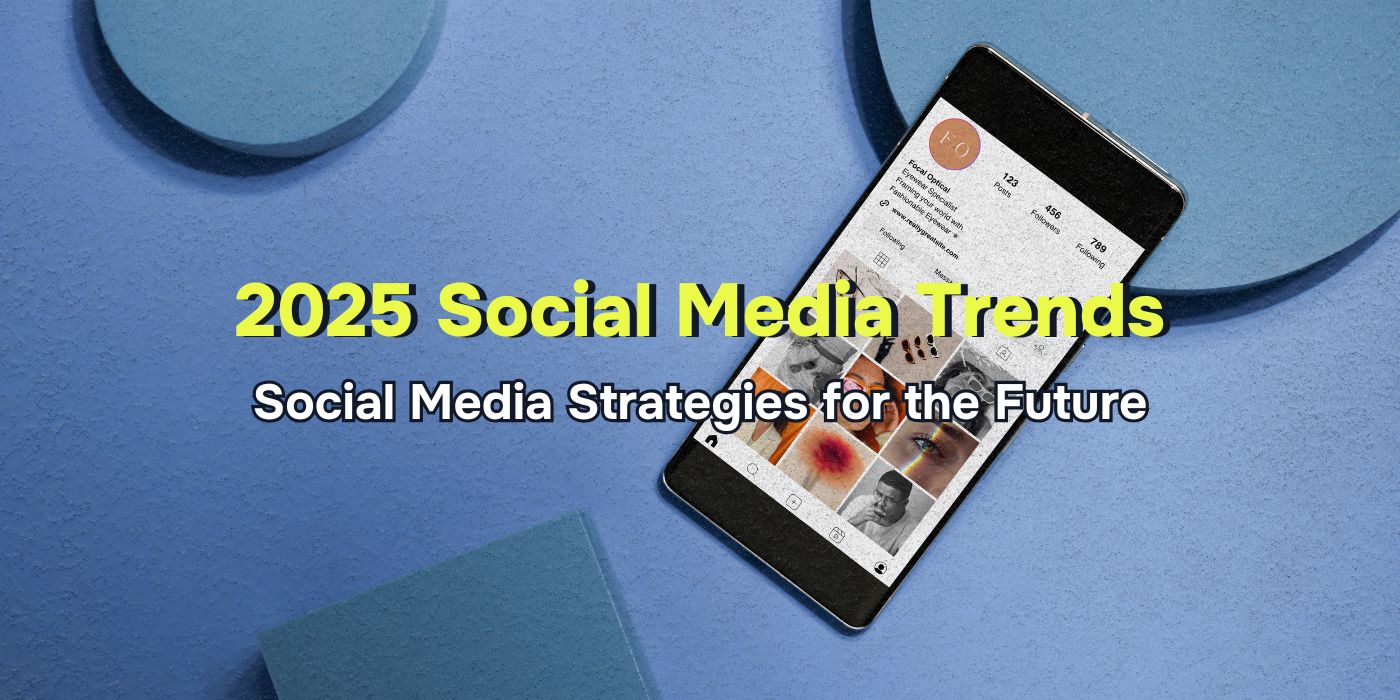Key Takeaways
- Focus on creating engaging hooks to capture attention within seconds.
- Personal branding for company leaders is crucial for connecting with audiences.
- Cinematic storytelling adds emotional depth and increases engagement with your brand.
- 2025 will require brands to adapt to these trends for more effective social media strategies.
As we move into 2025, the landscape of social media continues to evolve at a rapid pace. For brands looking to maintain a competitive edge, understanding the key trends in social media content is more important than ever. In this blog, we’ll explore three pivotal trends that will shape how brands approach their content strategies: the need for engaging hooks, the rise of personal branding for company leaders, and the shift toward cinematic storytelling. Let’s dive in.
The Importance of Hooks
In a world where content is abundant and attention spans are shrinking, grabbing the viewer’s attention in the first few seconds is no longer optional—it’s a necessity. The concept of the hook has become central to creating content that resonates with audiences, particularly in the short-form video era. Whether you’re creating an Instagram Reel, TikTok video, or YouTube short, the hook is what makes a viewer stop scrolling and pay attention.
Why Hooks Are Crucial
The reality of social media today is that audiences are bombarded with thousands of pieces of content daily. Studies show that people’s attention spans are shorter than ever, meaning if you don’t captivate your audience within the first few seconds, they’ll likely move on to something else. According to research by Microsoft, the average human attention span is now just eight seconds—less than a goldfish’s!
That’s where hooks come in. A good hook not only grabs attention but also sparks curiosity, prompting the viewer to stay and learn more. By creating hooks that resonate emotionally or intellectually, brands can increase their chances of engaging their audience from the get-go.
Types of Hooks to Use
There are several types of hooks that brands can leverage, depending on their goals and target audience. Here are a few popular options:
- Question-based Hooks: Posing a thought-provoking question is a great way to get viewers thinking. For example, “Ever wondered how top brands go viral?” or “What’s the secret to better skin in 2025?”
- Emotional Hooks: Emotional connections drive action. Phrases like “This one thing changed my life…” or “The journey was harder than I ever imagined…” tap into personal experiences that resonate with the audience.
- Curiosity-driven Hooks: Humans are naturally curious. Phrases like “You won’t believe what happens next” or “Wait for the shocking twist at the end” can spark curiosity and keep viewers engaged.
- Problem-solving Hooks: Offering a solution to a common problem can quickly gain interest. For instance, “Sick of dry skin? Here’s how to fix it fast” immediately promises value.
How to Curate Effective Hooks
To create a hook that works, you need to understand your audience deeply. What are their pain points? What excites them? Once you have this insight, tailor your hooks to address their needs directly. For example, a tech company could use hooks like “Here’s how to make your device 10x faster” to capture the attention of tech enthusiasts.
It’s also important to test different hooks. Not every hook will work for every audience, so experiment with different styles to see what resonates. You can even leverage A/B testing to track which hooks perform best.
Why Hooks Need to Be a Priority in 2025
As social platforms continue to refine their algorithms, creating content that stops the scroll will be more important than ever. Platforms like Instagram, TikTok, and YouTube prioritize content that captures immediate attention, which means that hooks will play a central role in content strategy in 2025. Brands that focus on crafting compelling hooks will have a better chance of reaching and engaging their target audience.
The Rise of Personal Branding for Leaders
One of the most significant shifts in social media in recent years is the rise of personal branding. Today, people want to engage with real, relatable individuals, not just faceless companies. As a result, personal accounts are outperforming brand accounts on platforms like LinkedIn, Instagram, and Twitter. For businesses, this shift offers a unique opportunity to connect with audiences on a more human level.
Why Personal Branding Is Key
People follow people, not businesses. According to a report by Sprout Social, content from individuals on social platforms garners more engagement than content from corporate accounts. This is because personal brands build trust and foster an emotional connection with the audience. Personal stories, behind-the-scenes insights, and authentic interactions resonate more than polished corporate messages.
In 2025, personal branding will be a major factor in how businesses build their online presence. By empowering company leaders, executives, and key employees to cultivate personal brands, businesses can humanize their brand and forge stronger relationships with their customers.
How Company Leaders Can Build Their Personal Brands
Building a personal brand is about authenticity and consistency. Here’s how company leaders can get started:
- Be Authentic: Share personal experiences, thoughts, and insights. Audiences appreciate honesty and vulnerability, so it’s important to be genuine in your content.
- Consistency Is Key: Regular posting is essential for building a personal brand. This could include sharing industry insights, updates about the company, or even personal interests.
- Engage with Followers: Personal brands thrive on two-way communication. Respond to comments, messages, and engage in conversations with your audience to build a community around your brand.

The Shift Toward Cinematic Storytelling
Cinematic storytelling is another trend that will dominate social media content in 2025. Consumers are becoming more sophisticated, and they expect high-quality, visually engaging content from the brands they follow. It’s no longer enough to just post product photos or basic promotional messages; today’s consumers want stories that move them, inspire them, or make them feel something.
What is Cinematic Storytelling?
Cinematic storytelling combines high-quality production values with emotionally compelling narratives. It’s about telling a brand’s story in a way that feels like a mini-movie, with a clear narrative arc, high production value, and immersive visuals. Whether it’s through a commercial, short video, or social media post, cinematic storytelling captivates the audience and makes the brand more memorable.
How Brands Can Incorporate Cinematic Storytelling
- Focus on Visuals: Invest in high-quality visuals, lighting, and editing to create a cinematic experience for your audience. High-definition videos with rich color palettes, dramatic lighting, and compelling shots are essential.
- Craft Emotional Narratives: The heart of cinematic storytelling is emotion. Focus on telling stories that resonate with your audience—whether it’s a customer success story, a behind-the-scenes look at your business, or an inspiring brand journey.
- Multiplatform Storytelling: Use different platforms to tell different parts of your brand’s story. For example, use Instagram Stories for daily updates, YouTube for longer-form content, and TikTok for short, punchy segments that tease the bigger picture.
Why Cinematic Content Works
Cinematic content is not only aesthetically pleasing but also deeply engaging. According to a recent study, video content is shared 1,200% more than images and text combined, and people are more likely to remember content that evokes emotion. By telling stories through a cinematic lens, brands can make a lasting impact on their audience.
The Future of Cinematic Storytelling in 2025
The tools needed to create cinematic content are becoming more accessible. With smartphones capable of shooting 4K video and affordable editing software available, brands of all sizes can create high-quality, cinematic content. In 2025, brands that embrace cinematic storytelling will be able to create more immersive, memorable experiences for their audiences.
Conclusion
As social media continues to evolve, so too must the way brands approach their content strategies. By embracing these key trends—creating engaging hooks, building personal brands, and leveraging cinematic storytelling—brands can stay ahead of the curve and foster deeper connections with their audiences. As we move into 2025, brands that invest in these strategies will be better equipped to capture attention, drive engagement, and build lasting relationships with their customers.
FAQs
1. Why are hooks important in social media content?
Hooks grab the viewer’s attention immediately, which is essential for standing out in a crowded feed. They increase engagement by sparking curiosity and emotion.
2. How can personal branding help a business?
Personal branding humanizes the company, fostering trust and deeper connections with the audience. Personal accounts tend to perform better than brand accounts on social platforms.
3. What makes cinematic storytelling effective for brands?
Cinematic storytelling uses high-quality visuals and emotional narratives to engage viewers. This immersive content increases brand recall and strengthens audience loyalty.
